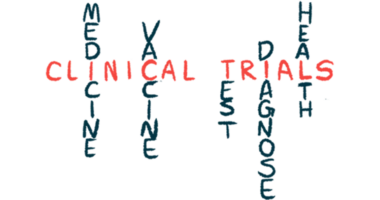Bleeds, Physical Limits Afflict Severe Hem A Patients Despite Prophylaxis

Spontaneous and joint bleeds, and limits on physical activity are evident in people with severe hemophilia A even when they adhere to and remain on preventive treatment, an analysis of global, real-world data showed.
These findings highlight the need for additional alternative therapies for patients with severe disease.
The study, “Real-World Rates of Bleeding, Factor VIII Use, and Quality of Life in Individuals with Severe Haemophilia A Receiving Prophylaxis in a Prospective, Noninterventional Study,” was published in the Journal of Clinical Medicine.
Hemophilia A is caused by the lack of functional factor VIII (FVIII), an essential blood clotting protein.
Regular prophylactic, or preventive, treatments that provide the missing FVIII are currently used to prevent spontaneous bleeding episodes in patients with severe hemophilia A.
Although preventive treatments have improved patients’ quality of life, people with severe disease still experience bleeding events, which mainly affect joints and soft tissues.
To better understand the impact of severe hemophilia A with preventive treatment, an international group of researchers analyzed real-world data from 294 adult men (median age of 31 at study enrollment) with severe hemophilia A under FVIII preventive treatment. Severe hemophilia A was defined as FVIII levels of 1 international units per deciliter (IU/dL) or lower.
Patients were enrolled at sites across Australia, Europe or the Middle East, South America, East Asia, North America, and Africa. These sites were selected based on an expressed interest in participating in gene therapy trials, including the Phase 3 GENEr8-1 (NCT03370913) and GENEr8-2 (NCT03392974) studies. Both are assessing BioMarin’s investigational one-time gene therapy Roctavian (valoctocogene roxaparvovec) for severe hemophilia A.
Patients reported six months of data regarding bleeding episodes and medication use. They also completed patient-reported outcomes, including the hemophilia-specific health-related quality of life questionnaire for adults (Hemo-QoL-A) and the EuroQol-5 Dimension (EQ-5D), as well as the Hemophilia Activities List (HAL) and Work Productivity and Activity Impairment plus Classroom Impairment Questions: Hemophilia Specific (WPAI+CIQ:HS). This questionnaire assesses the limitations posed by hemophilia on various daily life and work activities. Patients were then followed for up to 12 months.
Of the 294 people enrolled, 225 (76.5%) completed over six months of follow-up.
At the study’s start (baseline), 198 patients (67.3%) reported a history of disease affecting the bones, muscles, and connective tissue — the tissue that holds together and supports other tissues and organs. These included 139 (47.3%) with hemophiliac arthropathy, or joint disease associated with hemophilia. Knee replacement surgery was reported by 41 patients (13.9%).
Over the six months analyzed (median follow-up of 225 days), patients reported a high adherence to their prescribed FVIII prophylaxis (median of 91.9%). Adherence of 80% or higher was reported by 72.4% of patients; 7.1% reported an adherence below 60%.
The median annualized bleeding rate (ABR) before joining the study was 2.0 and 2.05 during the study. A quarter of these people (24%) reported no bleeds.
The median annualized FVIII infusion rate was 122.3 infusions per year across the study’s total duration. Infusion rates were similar before and during this study.
In 98.3% of patients, the median total score in the Hemo-QoL-A was 76.3 (scores range from 0–100, with higher scores indicating better health-related quality of life). The highest scores were seen in measures assessing emotional impact, role functioning, and worry, while the lowest scores were seen in the physical functioning and consequences of a bleed.
The EQ-5D-5L index, completed by 89.8% of patients, had a median score of 0.767. The median score of the WPAI+CIQ:HS Activity Impairment was 20% (higher scores indicate greater impairments and less productivity)
Researchers then compared patients’ characteristics across the different sites. Those recruited in South America were the youngest (median age of 27) and the oldest from East Asia (median age of 40).
Joint problems were more common in patients across East Asia (56.3%) and less frequent in those from South America (9.3%) and Africa (18.4%). Exclusive use of extended half-life replacement therapy was more frequent in patients in Australia, followed by Europe/Middle East and North America, while plasma-derived therapies were mainly used by patients in Africa.
The median ABRs during the six-month study period were highest in patients from Africa (4.25) and lowest for those across South America (0.00) and Australia (1.68).
Across all sites, FVIII infusion rates were generally similar before and during the study. While the median Hemo-QoL-A total scores varied across clinical sites, the most affected domain in most regions was physical functioning, except in South America and Africa. Treatment availability and like concerns were noted most by patients in South America and worry about the consequences of bleeds by those from Africa.
“Despite high prophylaxis adherence, the continued occurrence of spontaneous and joint bleeding events requiring treatment and impaired physical functioning was evident in our study,” the researchers wrote.
“These results illustrate real-world shortcomings associated with regular FVIII prophylaxis for this cohort of individuals with severe [hemophilia A], for whom additional [bleed control] options are needed,” they concluded.







